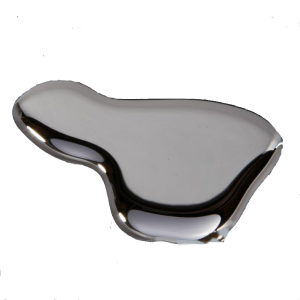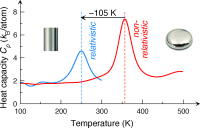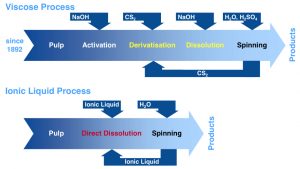Einstein´s theory of relativity explains why mercury is liquid
 Scientists from New Zealand, France, and Germany have solved the old “mystery” why mercury is liquid at room temperature. The study, published in the journal Angewandte Chemie [1], used advanced computer models of theoretical chemistry, to prove that the surprisingly low melting point is due to mercury’s special electron structure, something that can only be explained through Einstein’s special theory of relativity.
Scientists from New Zealand, France, and Germany have solved the old “mystery” why mercury is liquid at room temperature. The study, published in the journal Angewandte Chemie [1], used advanced computer models of theoretical chemistry, to prove that the surprisingly low melting point is due to mercury’s special electron structure, something that can only be explained through Einstein’s special theory of relativity.
Researchers have long suspected that mercury’s peculiarities are rooted in the effects of the special theory of relativity, but they have not been able to prove it quantitatively until now.
Albert Einstein’s special theory of relativity describes the properties of very high-velocity matter, such the mercury atom. The electron structure of the mercury atom having 82 electrons differs from that of lighter atoms, where these effects play a lesser role.
The scientists built a computer model of the atomic structure of mercury with its nucleus and electrons. Using Monte Carlo simulations and numerical methods, the research team studied the interaction of mercury atoms at various pressures and temperatures.
For a long time computers simply weren’t powerful enough for these types of simulations and calculations and did not provide sufficient computing capacity.
 “The properties of mercury have long puzzled theoretical chemists. Its aggregate state under normal conditions is always liquid, unlike other metals such as zinc, gold or copper, which need a lot of heat to melt”, says a press release of the University of Heidelberg.
“The properties of mercury have long puzzled theoretical chemists. Its aggregate state under normal conditions is always liquid, unlike other metals such as zinc, gold or copper, which need a lot of heat to melt”, says a press release of the University of Heidelberg.
[1] F. Calvo, E. Pahl, M. Wormit, P. Schwerdtfeger: Evidence for Low-Temperature Melting of Mercury owing to Relativity, Angew. Chem. Int. Ed. 2013, 52, 7583-7585 (English version)



Thank you for the summary. I also am very interested in your article on CO2 Dyeing. If you have a mailing list, please add me.
If you have subscribers, I am interested.
Fred